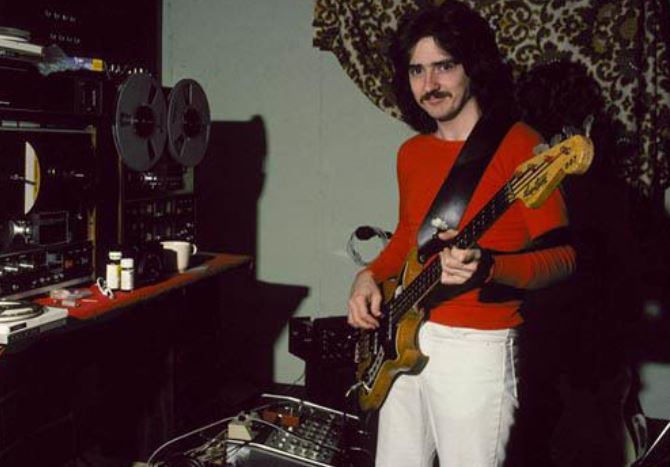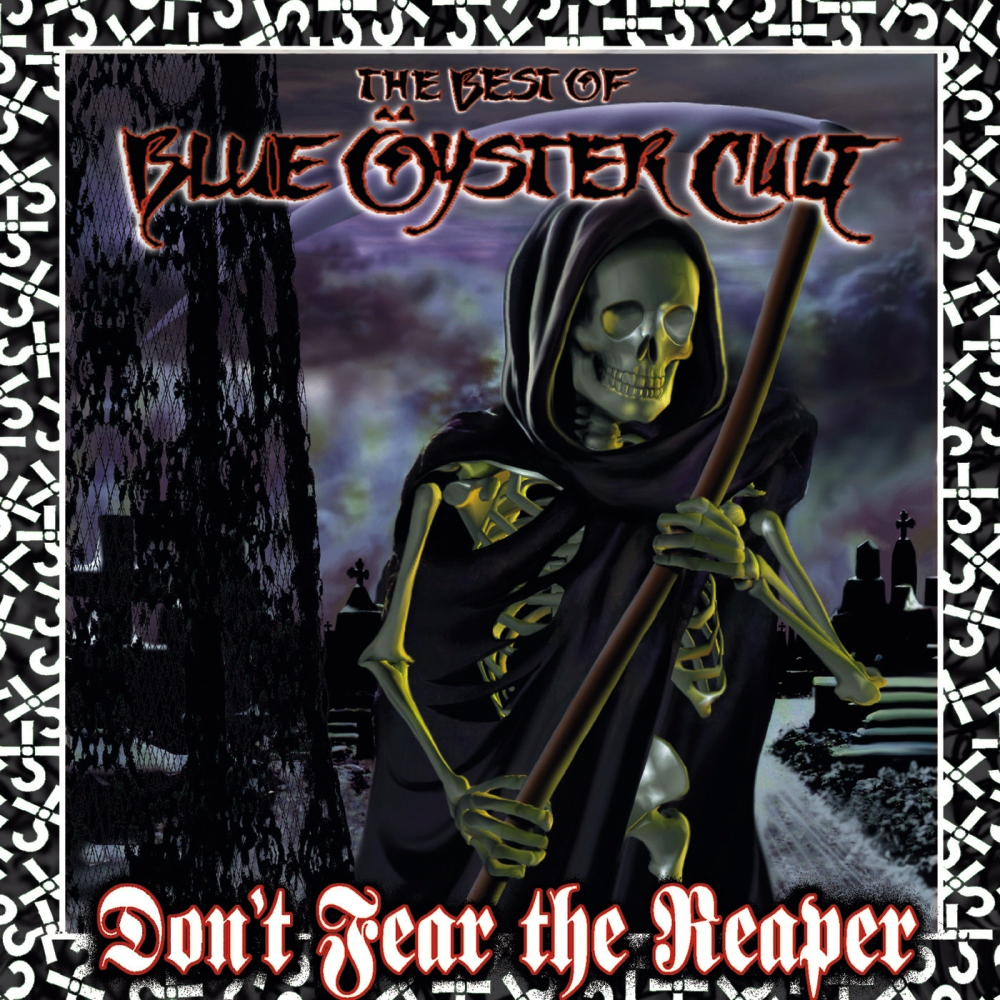The Meaning of Blue Öyster Cult’s “(Don’t Fear) The Reaper”

The most popular Blue Öyster Cult song, and one of the most famous rock songs of the 1970s, is “(Don’t Fear) The Reaper”. Appearing on the band’s 1976 album Agent of Fortune, the hard-rock-meets-psychedelia classic peaked at number 12 on the Billboard charts and has had fans discussing its meaning for decades since.
Written and sung by Donald “Buck Dharma” Roeser, the band’s lead guitarist and sole constant member, the lyrics explore eternal love and the afterlife, and how we should not fear death but accept, and perhaps embrace it.
Dharma has stated numerous times over the years that he initially penned the lyrics while imagining an early death for himself, and hoped that he could find peace with this if it were to become a reality.
Due to the song’s connection with Shakespeare’s Romeo & Juliet, some have speculated that the track was in some way promoting suicide. He spoke of this with the College Music Journal (CMJ) in 1995:
I felt that I had just achieved some kind of resonance with the psychology of people when I came up with that, I was actually kind of appalled when I first realized that some people were seeing it as an advertisement for suicide or something that was not my intention at all. It is, like, not to be afraid of it (as opposed to actively bring it about). It’s basically a love song where the love transcends the actual physical existence of the partners.
Songwriter Buck Dharma on the meaning of “(Don’t Fear) The Reaper”

With Buck’s explanation in mind, let’s dive into the meaning of the lyrics. Starting, of course, with the first verse:
All our times have come
First verse to “(Don’t Fear) The Reaper” by Blue Öyster Cult.
Here, but now they’re gone
Seasons don’t fear the reaper
Nor do the wind, the sun or the rain
In the introductory lyrics, Dharma sings about the end of life, saying that the two lovers times have come and gone. They were once here, but now they are passed and gone.
It’s important to note that the reaper, also known as the Grim Reaper, is a common mythological figure representing death itself. If you see the Grim Reaper, that means that death has come for you, and there is nothing you can do to escape it.
Buck’s lyrics assert that the seasons are not afraid of death, and neither is the wind, the sun, or the rain. He follows up on this with the chorus:
(We can be like they are) Come on, baby
Chorus to “(Don’t Fear) The Reaper” by Blue Öyster Cult.
(Don’t fear the Reaper) Baby, take my hand
(Don’t fear the Reaper) We’ll be able to fly
(Don’t fear the Reaper) Baby, I’m your man
La, la, la, la, la
La, la, la, la, la
Addressing a lover, Buck sings that they can be like the seasons, the wind, the sun, and the rain, and also not fear death. He encourages his lover to take his hand, be with him, and fly onward without fear of the reaper.

It’s easy to see how some listeners would mistake these lyrics as promoting suicide, as it can be interpreted that he is suggesting that the lovers die together. The truth, however, is that the lyrics are encouraging the two lovers to live without fear and embrace their love with the hope that it will continue into the afterlife.
Next up is an instrumental bridge, followed by the second verse:
Valentine is done
Second verse to “(Don’t Fear) The Reaper” by Blue Öyster Cult.
Here, but now they’re gone
Romeo and Juliet
Are together in eternity (Romeo and Juliet)
40,000 men and women everyday (Like Romeo and Juliet)
40,000 men and women everyday (Redefine happiness)
Another 40,000 coming everyday
The second verse brings a bit more complexity to the lyrics, as Dharma draws reference to a number of things that can be seen as ambiguous.
First, he sings that “Valentine is done”, referring to Valentine’s Day, a time when lovers typically spend time together and enjoy a romantic evening. The time for this has passed because death has arrived, or so he imagines.
Next, and perhaps the main reason why people think that this is a song about suicide, Buck Dharma brings in a reference to Shakespeare’s Romeo and Juliet, two lovers who tragically commit suicide together due to their intense love for one another.

Dharma posits that Romeo and Juliet are together in the afterlife because of the true depth of their love, which is not exactly promoting suicide but moreso encouraging folks to not be afraid of death, rather to accept it as part of life and trust that true love outlasts a mortal existence.
Then, he suggests that 40,000 people die every single day, and that there is nothing to be done about it because there will be another 40,000 who die tomorrow. The key here is the lyric “redefine happiness”, as he is proposing that lovers find a way to be happy despite the inevitability of death.
It’s also of note that the figure of 40,000 deaths per day is way off, as it is estimated that actually 170,000 people die every single day.
Following this complex second verse we have another hit of the chorus, followed by another instrumental section, and then Buck sings the third verse:
Love of two is one
Third verse to “(Don’t Fear) The Reaper” by Blue Öyster Cult.
Here, but now they’re gone
Came the last night of sadness
And it was clear she couldn’t go on
The door was open and the wind appeared
The candles blew and then disappeared
The curtains flew and then he appeared
Verse three presents us with even more complex imagery, with the first line stating that two lovers become one together, or share one love in this life, but it is fleeting as life cannot last forever.

The lyric about the “last night of sadness” is another Romeo and Juliet reference, as when Juliet discovers that Romeo has killed himself she proceeds to do the same. This yet again invites some listeners to interpret this as a song about a suicide pact, although Dharma has repeatedly stated that was not the case.
Finally, the reaper arrives, with wind blowing out the candles and the curtains flying open to reveal the dark shadow of the man that is here to take this woman off to her death.
Following the third verse, we have an alternate chorus, sharing the melody of the earlier hooks but changing the lyrics:
(Saying, “don’t be afraid”) Come on, baby
Alternative chorus / outro lyrics to “(Don’t Fear) The Reaper” by Blue Öyster Cult.
(And she had no fear) And she ran to him
(Then she started to fly) They looked backward and said goodbye
(She had become like they are) She had taken his hand
(She had become like they are) Come on, baby
(Don’t fear the Reaper)
Here we can see that the woman has finally accepted death, and learned not to fear it. Her time has come and she must go off with the reaper into the eternal darkness of death, or into the afterlife, with hope and trust that she will encounter her lover on the other side.
Listen to “(Don’t Fear) The Reaper” by Blue Öyster Cult below.
“More Cowbell”
“(Don’t Fear) The Reaper” is also famous for its use of cowbell, as the band initially recorded a version of the song that was far too long to actually make the album, taking almost six weeks to do so. They notoriously spent just as much time trying to shorten it to a reasonable length as they did recording it.
Finally, after paring it down to a length that was acceptable for a single, the band found that the song was missing something. Producer David Lucas suggested that drummer, and his brother, Albert Lucas play the cowbell, and he reluctantly agreed, thus turning the song into what it is today.
“Albert thought he was crazy,” bassist Joe Bouchard said in a 2005 Washington Post interview, “But he put all this tape around a cowbell and played it. It really pulled the track together.”
This story inspired the famous Saturday Night Live skit from 2000, “More Cowbell”. The skit features Will Ferrell as Gene Frenkle, the fictional cowbell player, and Christopher Walken as producer Bruce Dickinson (the Iron Maiden singer who actually did not produce the song), and has Walken repeatedly interrupting the band to say that the song needs “More Cowbell”.
Watch the hilarious classic skit below.